Author Photo And Bio
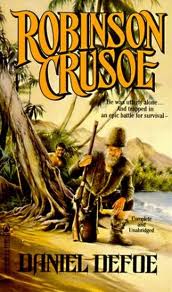 1. Robinson Crusoe by Daniel Defoe (1719). This rollicking yet existential adventure with deep religious undertones begins with fatherly advice: pursue a stable career. But the wastrel son denies his father because he is tempted by the sea. This salty path gets young Robinson kidnapped by Moorish pirates, sold into slavery, and shipwrecked on a remote island filled with cannibals. Yet this island seems an Eden to Crusoe, whose ingenuity enables him to tame the land, conquer the natives, and save the life of an islander, whom he makes his servant and christens Man Friday, as he comes to recognize and accept God’s will.
1. Robinson Crusoe by Daniel Defoe (1719). This rollicking yet existential adventure with deep religious undertones begins with fatherly advice: pursue a stable career. But the wastrel son denies his father because he is tempted by the sea. This salty path gets young Robinson kidnapped by Moorish pirates, sold into slavery, and shipwrecked on a remote island filled with cannibals. Yet this island seems an Eden to Crusoe, whose ingenuity enables him to tame the land, conquer the natives, and save the life of an islander, whom he makes his servant and christens Man Friday, as he comes to recognize and accept God’s will.
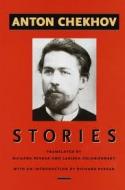 2. Stories of Anton Chekhov (1860–1904). The son of a freed Russian serf, Anton Chekhov became a doctor who, between the patients he often treated without charge, invented the modern short story. The form had been overdecorated with trick endings and swags of atmosphere. Chekhov freed it to reflect the earnest urgencies of ordinary lives in crises through prose that blended a deeply compassionate imagination with precise description. “He remains a great teacher-healer-sage,” Allan Gurganus observed of Chekhov’s stories, which “continue to haunt, inspire, and baffle.”
2. Stories of Anton Chekhov (1860–1904). The son of a freed Russian serf, Anton Chekhov became a doctor who, between the patients he often treated without charge, invented the modern short story. The form had been overdecorated with trick endings and swags of atmosphere. Chekhov freed it to reflect the earnest urgencies of ordinary lives in crises through prose that blended a deeply compassionate imagination with precise description. “He remains a great teacher-healer-sage,” Allan Gurganus observed of Chekhov’s stories, which “continue to haunt, inspire, and baffle.”
 3. Middlemarch by George Eliot (1871–72). Dorothea Brooke is a pretty young idealist whose desire to improve the world leads her to marry the crusty pedant Casaubon. This mistake takes her down a circuitous and painful path in search of happiness. The novel, which explores society’s brakes on women and deteriorating rural life, is as much a chronicle of the English town of Middlemarch as it is the portrait of a lady. Eliot excels at parsing moments of moral crisis so that we feel a character’s anguish and resolve. Her intelligent sympathy for even the most unlikable people redirects our own moral compass toward charity rather than enmity.
3. Middlemarch by George Eliot (1871–72). Dorothea Brooke is a pretty young idealist whose desire to improve the world leads her to marry the crusty pedant Casaubon. This mistake takes her down a circuitous and painful path in search of happiness. The novel, which explores society’s brakes on women and deteriorating rural life, is as much a chronicle of the English town of Middlemarch as it is the portrait of a lady. Eliot excels at parsing moments of moral crisis so that we feel a character’s anguish and resolve. Her intelligent sympathy for even the most unlikable people redirects our own moral compass toward charity rather than enmity.
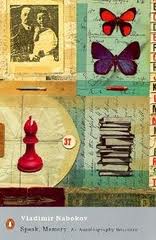 4. Speak, Memory by Vladimir Nabokov (1951). The son of a Russian aristocrat who was assassinated for his belief in democracy, Nabokov had a preposterously privileged childhood, including teams of governesses and servants and sojourns along the Riviera. When the Bolsheviks arrived, the family was forced to flee amid a hail of bullets. Later, as a student at Cambridge, Nabokov confronted those who romanticized the politics that exiled him. Ricocheting through time, space, and subject matter as it delves whimsically into the author’s literary influences and the minutiae of family history, this is a masterpiece of literary memoir.
4. Speak, Memory by Vladimir Nabokov (1951). The son of a Russian aristocrat who was assassinated for his belief in democracy, Nabokov had a preposterously privileged childhood, including teams of governesses and servants and sojourns along the Riviera. When the Bolsheviks arrived, the family was forced to flee amid a hail of bullets. Later, as a student at Cambridge, Nabokov confronted those who romanticized the politics that exiled him. Ricocheting through time, space, and subject matter as it delves whimsically into the author’s literary influences and the minutiae of family history, this is a masterpiece of literary memoir.
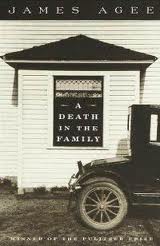 5. A Death in the Family by James Agee (1957). A Pulitzer Prize–winning work of autobiographical fiction tells the story of a Knoxville, Tennessee, family torn asunder by the father’s accidental death in 1915. In stunningly gorgeous prose, Agee chronicles the family’s life before and after the tragedy (as well as the larger community they live in), to depict the fragility of happiness, of family, and of life itself.
5. A Death in the Family by James Agee (1957). A Pulitzer Prize–winning work of autobiographical fiction tells the story of a Knoxville, Tennessee, family torn asunder by the father’s accidental death in 1915. In stunningly gorgeous prose, Agee chronicles the family’s life before and after the tragedy (as well as the larger community they live in), to depict the fragility of happiness, of family, and of life itself.
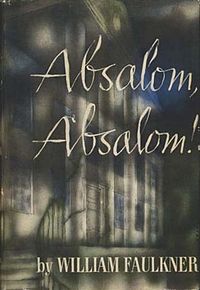 6. Absalom, Absalom! by William Faulkner (1936). Weaving mythic tales of biblical urgency with the experimental techniques of high modernism, Faulkner bridged the past and future. This is the story of Thomas Sutpen, a rough-hewn striver who came to Mississippi in 1833 with a gang of wild slaves from Haiti to build a dynasty. Almost in reach, his dream is undone by plagues of biblical (and Faulknerian) proportions: racism, incest, war, fratricide, pride, and jealousy. Through the use of multiple narrators, Faulkner turns this gripping Yoknapatawpha saga into a profound and dazzling meditation on truth, memory, history, and literature itself.
6. Absalom, Absalom! by William Faulkner (1936). Weaving mythic tales of biblical urgency with the experimental techniques of high modernism, Faulkner bridged the past and future. This is the story of Thomas Sutpen, a rough-hewn striver who came to Mississippi in 1833 with a gang of wild slaves from Haiti to build a dynasty. Almost in reach, his dream is undone by plagues of biblical (and Faulknerian) proportions: racism, incest, war, fratricide, pride, and jealousy. Through the use of multiple narrators, Faulkner turns this gripping Yoknapatawpha saga into a profound and dazzling meditation on truth, memory, history, and literature itself.
 7. The Importance of Being Earnest by Oscar Wilde (1895). “The truth is rarely pure and never simple,” one character remarks in Wilde’s clever comedy about double identities. And white lies are even more complicated, as two young Englishmen of leisure learn when they try to avoid undesirable social obligations by claiming their noble services are required by needy (and imaginary) friends. When the worlds of their “friends” and fiancées collide, their confabulations turn to witty farce.
7. The Importance of Being Earnest by Oscar Wilde (1895). “The truth is rarely pure and never simple,” one character remarks in Wilde’s clever comedy about double identities. And white lies are even more complicated, as two young Englishmen of leisure learn when they try to avoid undesirable social obligations by claiming their noble services are required by needy (and imaginary) friends. When the worlds of their “friends” and fiancées collide, their confabulations turn to witty farce.
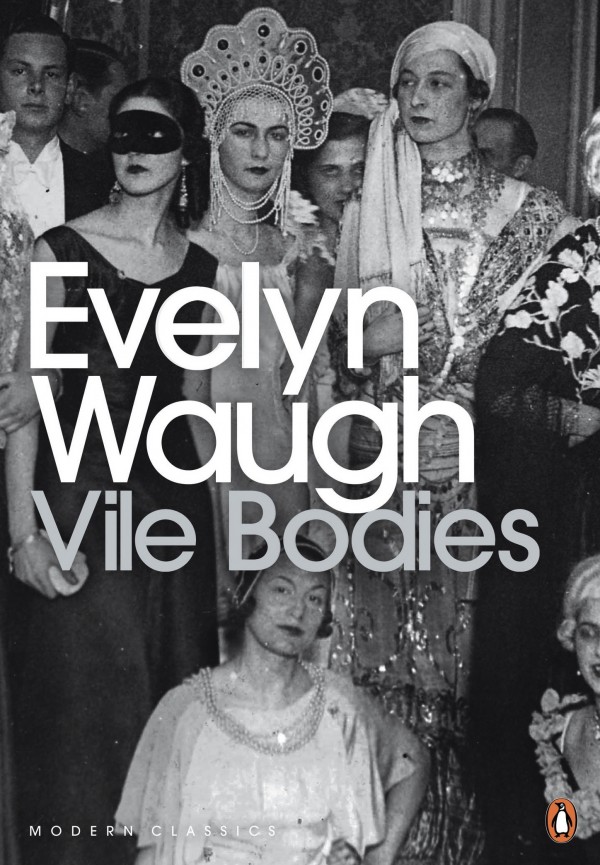 8. Vile Bodies by Evelyn Waugh (1930). This careening novel follows a group of shallow, well-off Brits to motor races and antic parties. Joining in on the Bright Young Things’ mad doings are a writer named Adam Fenwick-Symes and his on-again, off-again fiancée. War looms, but Waugh’s style —dry and bubbly as the novel’s flowing champagne —keeps us laughing, even as characters descend into madness or head for the battlefield.
8. Vile Bodies by Evelyn Waugh (1930). This careening novel follows a group of shallow, well-off Brits to motor races and antic parties. Joining in on the Bright Young Things’ mad doings are a writer named Adam Fenwick-Symes and his on-again, off-again fiancée. War looms, but Waugh’s style —dry and bubbly as the novel’s flowing champagne —keeps us laughing, even as characters descend into madness or head for the battlefield.
 9. Emma by Jane Austen (1816). The story of Miss Woodhouse —busybody, know-it-all, and general relationship enthusiast —is a comedy of manners deftly laced with social criticism. The charm largely inheres in Emma’s imperfections: her slightly spoiled maneuverings, her highly fallible matchmaking, her inability to know her own heart. Emma teeters from lovable one moment to tiresome and self-centered the next. In writing her story, Austen found an ideal venue for her note-perfect, never-equaled archness.
9. Emma by Jane Austen (1816). The story of Miss Woodhouse —busybody, know-it-all, and general relationship enthusiast —is a comedy of manners deftly laced with social criticism. The charm largely inheres in Emma’s imperfections: her slightly spoiled maneuverings, her highly fallible matchmaking, her inability to know her own heart. Emma teeters from lovable one moment to tiresome and self-centered the next. In writing her story, Austen found an ideal venue for her note-perfect, never-equaled archness.
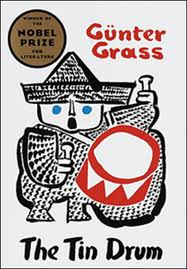 10. The Tin Drum by Günter Grass (1959). This picaresque novel depicts the rise of Nazism in Germany and its terrible consequences through the adventures of Oskar Matzerath, “the eternal three-year-old” who stunts his growth at three feet and uses his tin drum and piercing screams as weapons against a mad world. Chilling and absurd, teeming with black comedy and dark insights into the human soul, The Tin Drum is both an artistic triumph and an act of reclamation. As the Swedish Academy observed while presenting Grass with the Nobel Prize for Literature in 1999, the novel “comes to grips with the enormous task of reviewing contemporary history by recalling the disavowed and the forgotten: the victims, losers, and lies that people wanted to forget because they had once believed in them.”
10. The Tin Drum by Günter Grass (1959). This picaresque novel depicts the rise of Nazism in Germany and its terrible consequences through the adventures of Oskar Matzerath, “the eternal three-year-old” who stunts his growth at three feet and uses his tin drum and piercing screams as weapons against a mad world. Chilling and absurd, teeming with black comedy and dark insights into the human soul, The Tin Drum is both an artistic triumph and an act of reclamation. As the Swedish Academy observed while presenting Grass with the Nobel Prize for Literature in 1999, the novel “comes to grips with the enormous task of reviewing contemporary history by recalling the disavowed and the forgotten: the victims, losers, and lies that people wanted to forget because they had once believed in them.”